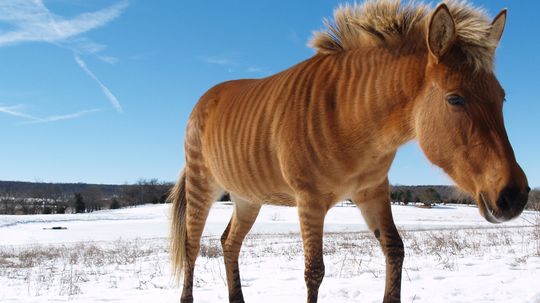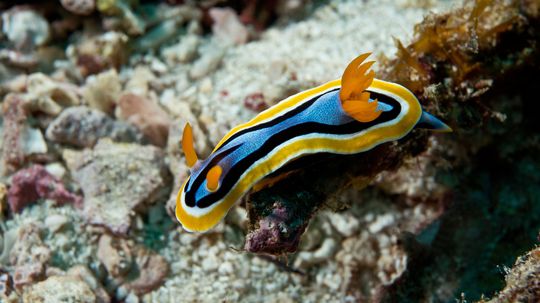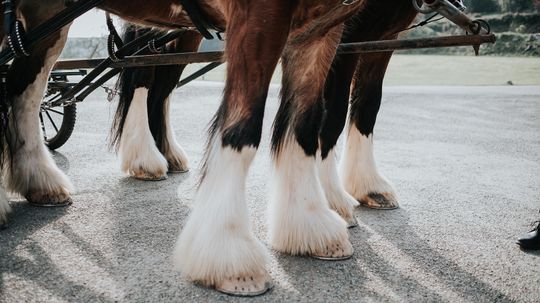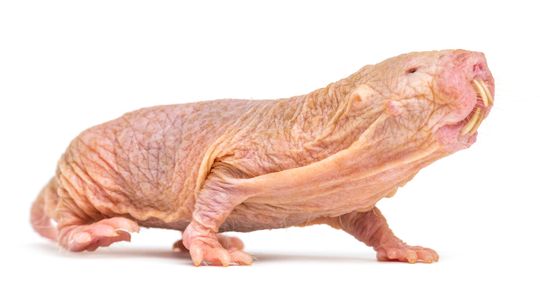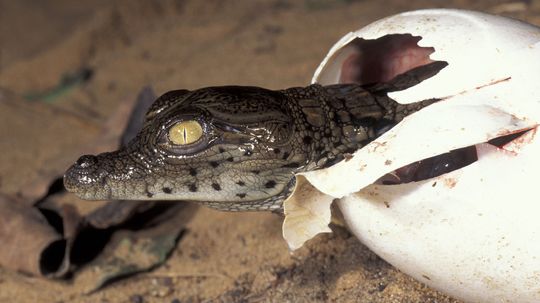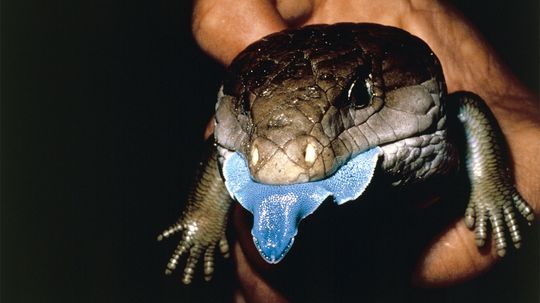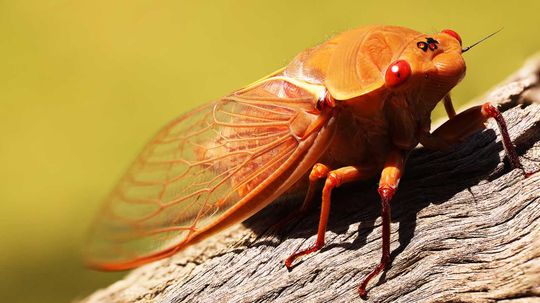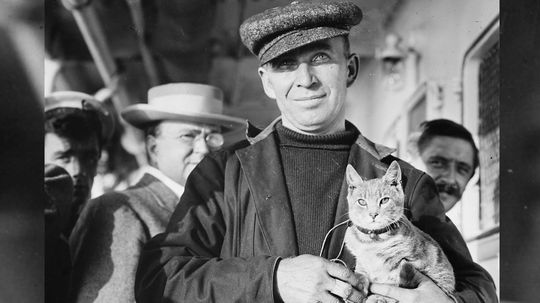Animal Facts
Learn about some of the strange and unusual facts and terms in the animal kingdom.

Are Christmas Trees Toxic to Cats? What About Tree Water?

The Portuguese Water Dog Swims With Webbed Paws

Can Dogs Eat Apples or Applesauce?
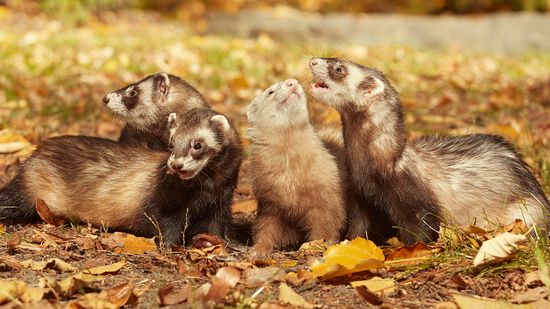
What Is a Group of Ferrets Called? You're Such a Busybody

What Is a Group of Flamingos Called? Not a Flock, Another 'F' Word
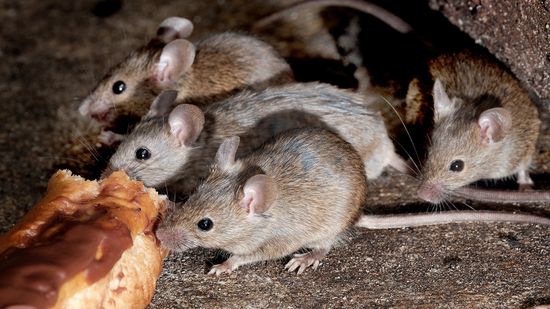
What Is a Group of Mice Called? Not Always a Colony
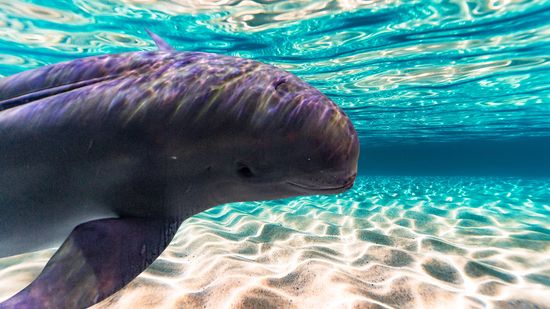
Yangtze Finless Porpoise: The World's Only Freshwater Porpoise
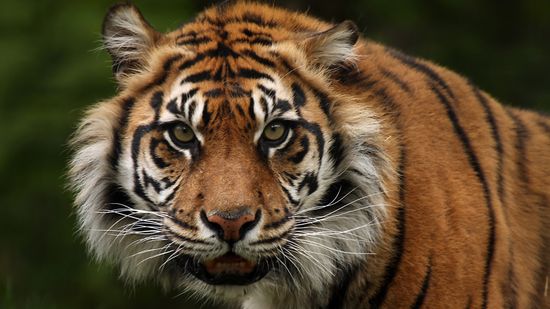
Sunda Tiger: A Critically Endangered Subspecies in Sumatra

The Sumatran Orangutan Faces Large-scale Habitat Loss

12 Scariest Dinosaurs You'd Want to Avoid While Time Traveling

The Smartest Dinosaur (and 9 More Clever Prehistoric Reptiles)

Pteranodon vs. Pterodactyl: Comparing Non-dinosaur Species
Learn More / Page 2
The natural world is home to some incredibly tiny creatures. From miniature mammals to tiny amphibians, many of the smallest animals in the world weigh less than a grape and are smaller than an average 5-year-old's hand.
By Ada Tseng
When it comes to the kings of the jungle, the tiger and lion stand out as the most iconic big cats in the animal kingdom. These apex predators — Panthera tigris (tiger) and Panthera leo (lion) — often spark debates about their strength, speed and dominance.
Apex predators attract a special kind of fascination; also called "super predators," they sit at the top of the food chain, unquestionably the most dominant members of the animal kingdom.
By Zach Taras
Advertisement
The zonkey is a rare hybrid that combines the iconic stripes of a zebra with the humble resilience of a donkey.
The wholphin (sometimes spelled wolphin) is the result of crossbreeding between a male false killer whale and a female bottlenose dolphin. The label "wholphin" combines the names of both parent species.
By Zach Taras
Zoos in the United States are home to some of the largest and most impressive collections of wild animals in the world. They serve the dual purpose of letting kids and adults view the animals while also helping protect endangered species and educating the public on wildlife conservation efforts.
By Talon Homer
From the immense strength of the African bush elephant to the incredible lifting power of the dung beetle, the animal kingdom is home to some of the world's strongest animals. Their differences demonstrate the many ways in which strength manifests across the planet.
By Marie Look
Advertisement
The world's largest horse breed varieties have evolved in step with the humans who domesticated and cared for them. Each ancient breed of large horses was selected for specific traits; some large breeds of war horses were fearless companions in battle. In contrast, carriage horses and riding horses were prized for their elegant appearance and easygoing temperament.
By Mitch Ryan
Scientists have developed several methods for grouping different members of the animal kingdom by species or unique characteristics. However, there is arguably no better method for learning fun facts than by listing animal names alphabetically. These are just a few animals that start with X.
By Mitch Ryan
With over 1.5 million different species living on our planet, there is no shortage of interesting ways to categorize them into groups. Most of the unique creatures on the following list are not closely related, except for the fact they are all animals that start with "n."
By Mitch Ryan
Sampson was a magnificent Shire horse from the mid-1800s whose incredible size and strength made him a legend in his own time. A true colossus, he dwarfed even the largest of draft horses.
By Marie Look
Advertisement
Hybrid animals, also called crossbreeds, are the offspring of two different or closely related species. Some only exist in captivity due to habitat differences.
By Yara Simón
The taxonomy that Carl Linnaeus introduced in "Systema Naturae" set the stage for a uniform animal classification system.
By Yara Simón
The strongest animal bite in the world isn't easy to measure, but even with conservative estimates, these are some impressive numbers.
By Sascha Bos
Discover the fascinating world of desert animals. Explore their survival strategies and adaptations in harsh arid environments.
By HowStuffWorks
Advertisement
If you think dog and cats are the world's smartest pets, you're right. But there are others too. Which smart animals top the list?
By Mitch Ryan
You can't dis a naked mole rat just for being himself, but, really, what animal could be uglier? Well, the world is full of ugly animals and we've got nine other choices for you.
There are a lot of contenders depending on how you slice it. We look at the fastest animals on land, sea and air.
By Alia Hoyt
Hammerhead worms are toxic but not particularly dangerous - unless, of course, you eat too many of them.
Advertisement
It's hard to say what is the most dangerous animal in the world; you're not comparing apples to apples. But when it comes dangerous, these four top the list.
By Alia Hoyt
These intelligent, friendly creatures have a life span of 15 to 20 years and make great pets.
Your dog barking at the mailman? Loud. But he's got nothing on these seven. They're some of the loudest animals on the planet, and they're probably not the ones you'd expect.
You probably like a lot of Animalia (that's the scientific name for animals), but how well do you know their formal monikers? Every animal has a two-part Latin name, with the first word capitalized, for classification purposes.
By Alia Hoyt
Advertisement
A zorse is one strange looking horse. That's because it's the product of a zebra stallion and a female horse.
Kiddo was his name and not only was he the first cat to attempt to cross the Atlantic in an airship, but he also did it as a stowaway.
By John Donovan



